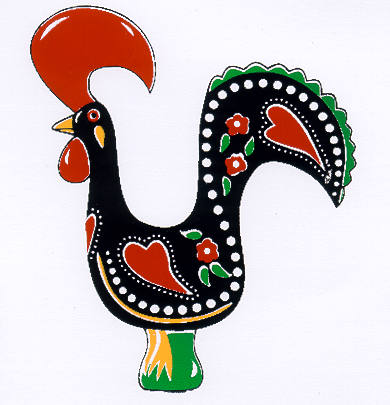
Restora PWDS
Return to home page
LOST!
The characteristics of this breed--quickness, reactivity, even simple curiosity--can sometimes get them into trouble. If your dog startles or sees an open gate or audacious squirrel, it can be gone in a flash. If this happens when in unfamiliar territory, the dog can quickly become lost. While I hope you never need this information, it is better to have it, printed out in your travel first aid kit.
Years ago, the breed standard described the breed as "aloof with strangers...a brawler by nature." Though those words are not in the breed description any longer, the traits are still to be found in the dogs, and attempts by well-meaning people to help "capture" a lost dog by grabbing at it will cause the dog to shy away quickly, and run even faster.
When a dog perceives that it is at risk, several things happen physiologically. Adrenalin starts pumping to increase awareness and stamina. Appetite decreases (this is part of how lost dogs can survive on their own for so long). The sense of hearing increases immensely. Sight and smell also increase. Since dogs recognize things visually by silhouette more than by detail, they perceive "classes" of things rather than individuals. This enables them to react more quickly to something that fits into the "threat" category. This means that all humans will be classified as the same by a dog in survival mode, even the owner or people known to the dog. It means that even the softest calling of the dog's name will sound thunderous and threatening to it.
If your dog is ever lost, please consider the following information and pass it along to anyone helping you search. Each person searching should have with them some high value food and a slip-on leash. A cell phone is very helpful (set the phone to an auto-dial to the search coordinating base). Small bits of brightly colored tape or yarn to mark sightings or pathways that were taken can help. Each person should have a designated area to search that the search coordinator knows.
1. Move smoothly and steadily rather than quickly. Make minimal noise.
2. If the dog is sighted at a distance, do not call out. If the dog sees you, stand still, turn sideways, and look down at the ground, using your peripheral vision to observe the dog. Watch the dog's body language for any signs of relaxation, and do not move if the dog stays "on alert" and watching you.
3. If the dog relaxes somewhat, slowly move towards the dog, keeping your body angle sideways. Only continue to advance as long as the dog seems to stay calm. If the dog starts to move, or tenses, immediately stop, and crouch down. Get comfortable, because you might need to hold that position for several minutes. Place some food on the ground near you. The dog must accept your presence and calm down enough to investigate. It needs time to make that decision. Any attempts to hurry it will only cause it to flee, and deepen the flight response to make it even more wary the next time someone sees it. Dogs associate most humans with food and security, and sooner or later it will approach.
While you are waiting for the dog to approach, you can dial a call to the search base. Rather than talking into the phone, when the call is answered, simple press a pre arranged code, for example, 333. This lets the base know that the dog has been sighted in your area without the risk of startling the dog by your voice. Disconnect.
4. When the dog approaches, resist the temptation to get up, reach out for the dog, or to call its name--that will only cause the dog to run away. Remain still, eyes averted, till the dog approaches you, sniffs, and initiates physical contact with you. Only after the dog has first touched you can you slowly reach out to touch the dog.
5. Touch the dog first in a neutral or comfort zone--on the chest, under the ears, on the side, at the rib cage join. Avoid the power zones--the top of the head, the withers, the paws or the base of the tail. Then slip the leash over the dog's head. Slowly stand up. Then make that happy "Found!" phone call.
May you never need this information, and may you be successful if you do!